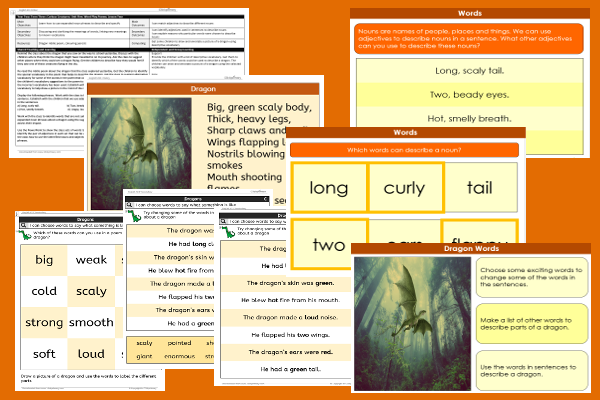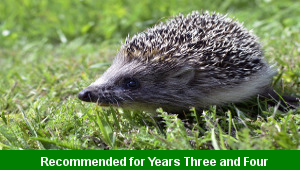Lesson Two – Dragon Words

This English teaching pack for Key Stage One gets the children to investigate how to choose and record powerful descriptive vocabulary words to describe some different parts of a dragon in example sentences.
The class can edit and extend sentences using more effective and exciting vocabulary to describe a dragon to describe its appearance, sounds and movements.
Download this teaching pack including a lesson plan, classroom activities and an interactive presentation to investigate how to choose and record powerful descriptive vocabulary words to describe some different parts of a dragon in example sentences
Activities in this teaching pack include a shared reading text to identify and define adjectives that have been used to describe different nouns in a poem about a dragon and a set of differentiated worksheets to select and use adjectives to describe some different parts of a dragon in sentences.
The interactive presentation gets the children to explore and record powerful descriptive vocabulary to describe some different parts of a dragon in example sentences.
This lesson is part of an English scheme of work to get the children to investigate poems about different animals that play with language written as tongue twisters, riddles and rhymes, practise spelling words ending in the suffix tion and use noun phrases to describe and specify animals. There are teaching activities for shared learning, differentiated worksheets to support independent learning and interactive presentations to introduce concepts and key skills.
-

Rounding Hundreds
Explain and model how to round some different numbers to the nearest hundred based on the place values of the digits in each number
-

Rounding Tens
Identify and record how to round some different numbers to the nearest ten based on the place values of the digits in each number
-

Classic Animal Stories
Investigate the structure and content of classic works of fiction by significant authors with animals as the main characters
-

Cities, Towns and Villages
Research and present the history of a range of different buildings and people that are part of the local community using a school exhibition
